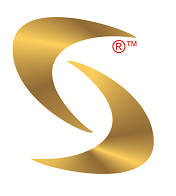Benefits of Using Dell Technologies to Integrate with Azure HCI Stack
Written by Dr. Rigoberto Garcia, December 2021
Introduction The integration of Dell Technologies systems with Microsoft Azure Stack HCI (Hyper-Converged Infrastructure) delivers a seamless hybrid cloud environment. This article explores the key benefits of using Dell Technologies in tandem with Microsoft Azure HCI, highlighting efficiency, scalability, and comprehensive management features that provide organizations with a unified IT platform.
1. Seamless Integration Dell Technologies’ Azure Stack HCI solutions are pre-configured and tested, ensuring a smooth and efficient setup. The integration includes features like Hyper-V and Storage Spaces Direct, simplifying deployment and enhancing configuration management. The validated designs provided by Dell Technologies ensure optimal performance and smooth operations (Dell, 2021a).
Dell Technologies has a strong partnership with Microsoft, dating back to 2017. In this partnership, Dell certified Windows Server Software-Defined (WSSD) solutions on Dell PowerEdge servers and further refined this relationship by launching S2D Ready Nodes and Dell Integrated Systems (Dell, 2021a). These systems come with comprehensive support for features like:
-
Hyper-V
-
Storage Spaces Direct (S2D)
-
Failover Clustering
These solutions are pre-configured to deliver optimal performance in HCI environments, reducing the complexities of setup and ensuring faster deployment.
2. Comprehensive Update Management With Dell APEX Cloud Platform Foundation Software, Dell Technologies offers seamless lifecycle management for software and hardware. Automated workflows allow the efficient rollout of system updates, reducing downtime and minimizing administrative overhead (Lamia, 2023). These comprehensive features ensure that all system components stay updated and secure, resulting in a more reliable and high-performing HCI environment.
3. Advanced Monitoring and Governance Dell Technologies’ integration with Azure governance services, such as Azure Arc, enables centralized management and monitoring of event data. This visibility is further enhanced through Azure Monitor Insights, which provides real-time insights into system health (Lamia, 2023). By integrating hardware-level insights with Azure’s native monitoring tools, IT teams can better control their hybrid cloud environment.
4. Reduced Management Overhead Dell APEX Cloud Platform significantly reduces the management burden by offering a unified platform for configuration and deployment. This solution ensures that enterprises can efficiently manage workloads across data centers, edge locations, and the Azure public cloud (Lamia, 2023).
Dell APEX Cloud Platform facilitates this by:
-
Providing a centralized management platform for IT assets
-
Integrating configuration and compliance policies
-
Offering seamless monitoring of system health and workloads
Conclusion The integration of Dell Technologies with Microsoft Azure HCI Stack brings a cohesive hybrid cloud solution to enterprises seeking agility, scalability, and cost-efficiency. By leveraging Dell’s pre-configured systems, automated update management, and unified monitoring capabilities, organizations can effectively manage their IT workloads with reduced overhead and improved agility.
References Dell. (2021a). Why choose Dell Technologies for Microsoft Azure Stack HCI | Tech Book—Dell Integrated System For Microsoft Azure Stack HCI. Dell Technologies Info Hub. https://infohub.delltechnologies.com/l/tech-book-dell-integrated-system-for-microsoft-azure-stack-hci/why-choose-dell-technologies-for-microsoft-azure-stack-hci
Dell. (2021b). Dell Microsoft Azure Stack HCI Cluster Deployment | Dell US. https://www.dell.com/support/kbdoc/en-za/000201913/dell-microsoft-azure-stack-hci-cluster-deployment
Lamia, M. (2023). Dell Technologies First to Deliver Azure Stack HCI 23H2. Dell Technologies Info Hub. https://infohub.delltechnologies.com/l/dell-technologies-first-to-deliver-azure-stack-hci-23h2/dell-technologies-first-to-deliver-azure-stack-hci-23h2





